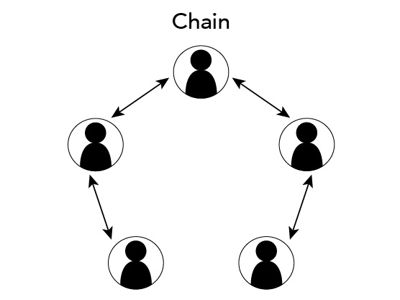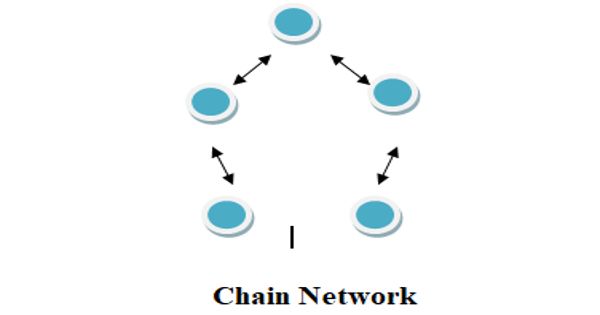In a chain network, individuals communicate in a set sequence. Here each member communicates with the person above and below. Communication starts at the top, like from a CEO, and works its way down to the different levels of employees. It reflects upward & downward communication and exists in a vertical hierarchy.
A chain network is at a hierarchical level and follows a series of commands. Here bottom to top communication does not happen. A superior ordering the subordinates is the best example of this type of network.
This communication network is indeed like a chain in that the top of the chain has to go through each individual link before getting to the end. This network of communication follows the organizational hierarchy and chain of command. The CEO will talk to a manager who is next in the hierarchy but does not talk to a clerk at the bottom of the hierarchy. It is nothing but communication via the scalar chain or the line of command.

The C E O may pass the information on to the managers who will pass it to the lower levels without alteration. Notice that the message generates at a higher level has to trickle down to the lowest level without any alteration. A manager and employee communicate with each other through the vertical chain of authority or command, both upwards and downwards. Since in this communication, a large number of nodes or repetition points may be involved, there is a great chance of error and miscommunication. Information perversion is not likely to take place but a communication system becomes time-consuming.
The chain network often takes up time, and communication may not be clear. Each person communicates with only the person directly above or below in terms of reporting relationships. This could cause people at the bottom to feel discouraged, but it could also give them the motivation to move up the chain. The message has to reach from top-level to bottom level without any alteration of meaning or words. This network is not fast and few people who don’t understand the message will remain in the loop.
Information Source:
















